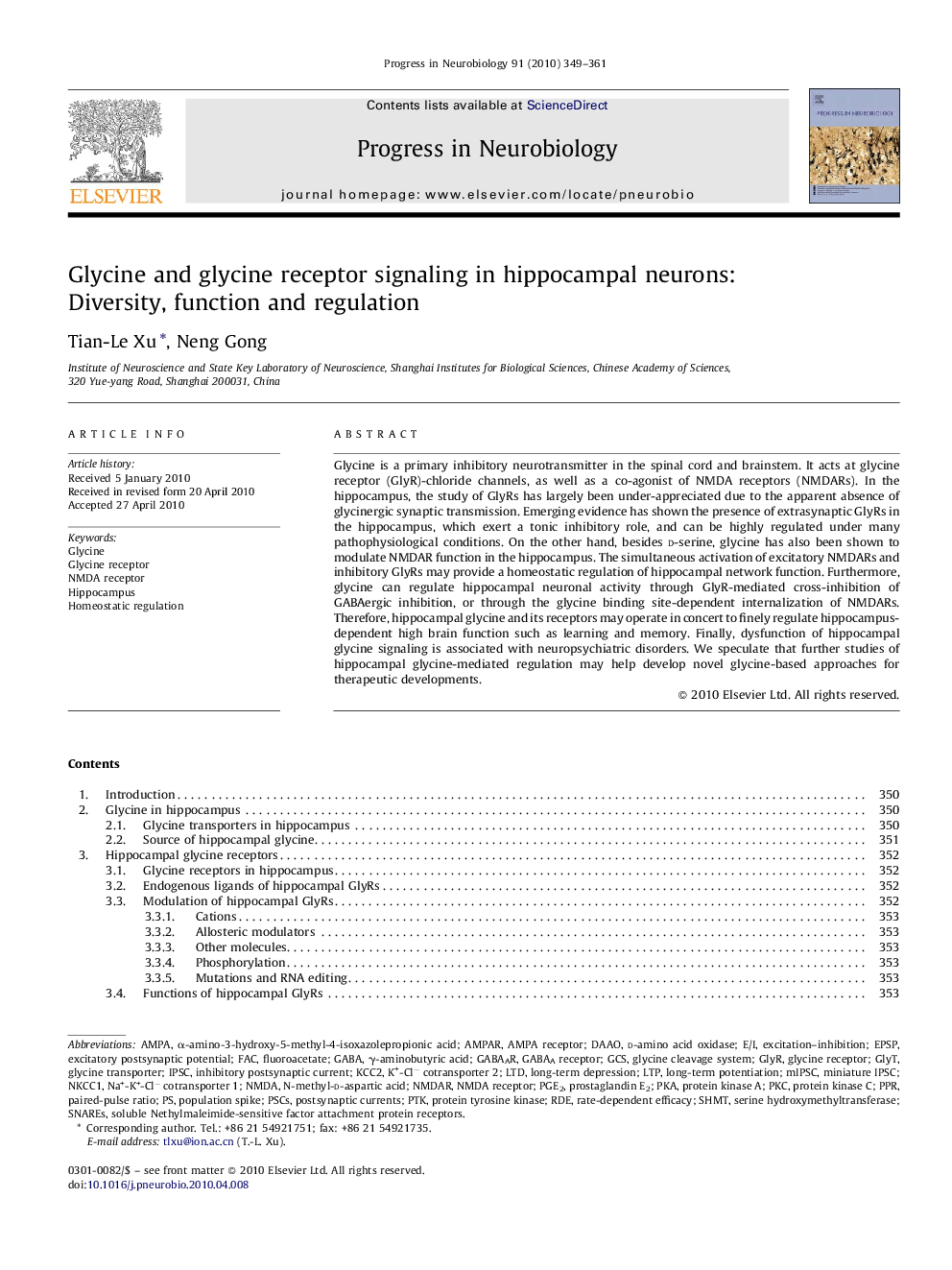| Article ID | Journal | Published Year | Pages | File Type |
|---|---|---|---|---|
| 4353573 | Progress in Neurobiology | 2010 | 13 Pages |
Glycine is a primary inhibitory neurotransmitter in the spinal cord and brainstem. It acts at glycine receptor (GlyR)-chloride channels, as well as a co-agonist of NMDA receptors (NMDARs). In the hippocampus, the study of GlyRs has largely been under-appreciated due to the apparent absence of glycinergic synaptic transmission. Emerging evidence has shown the presence of extrasynaptic GlyRs in the hippocampus, which exert a tonic inhibitory role, and can be highly regulated under many pathophysiological conditions. On the other hand, besides d-serine, glycine has also been shown to modulate NMDAR function in the hippocampus. The simultaneous activation of excitatory NMDARs and inhibitory GlyRs may provide a homeostatic regulation of hippocampal network function. Furthermore, glycine can regulate hippocampal neuronal activity through GlyR-mediated cross-inhibition of GABAergic inhibition, or through the glycine binding site-dependent internalization of NMDARs. Therefore, hippocampal glycine and its receptors may operate in concert to finely regulate hippocampus-dependent high brain function such as learning and memory. Finally, dysfunction of hippocampal glycine signaling is associated with neuropsychiatric disorders. We speculate that further studies of hippocampal glycine-mediated regulation may help develop novel glycine-based approaches for therapeutic developments.
